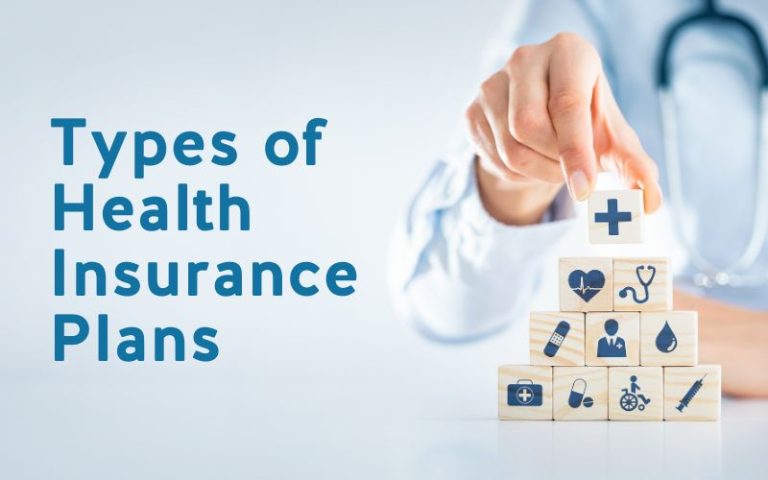Health insurance can be complicated but knowing the difference between types of health insurance plans can help you make an informed decision.
When you get health insurance through Woligo – our licensed agents can help explain the differences and recommend a plan based on your individual needs.
Types of health insurance plans
Different types of Marketplace health insurance plans are designed to meet different needs. Some types of plans restrict your provider choices or encourage you to get care from the plan’s network of doctors, hospitals, pharmacies, and other medical service providers.
Here, we break down the most common types of health insurance plans: EPO vs PPO vs HMO.
What is PPO?
Preferred Provider Organization (PPO) is a type of health plan that contracts with medical providers, such as hospitals and doctors, to create a network of participating providers. You pay less if you use providers that belong to the plan’s network. You can use doctors, hospitals, and providers outside of the network for an additional cost. 1
A PPO might be a good option if you want more control over your choices and don’t mind paying more for that ability. For example, if you travel a lot or have a team of doctors and service providers you really like, a PPO might be helpful because you can use providers both in and out of network.
Open Enrollment runs every year from November 1 – January 15!
Advantages of PPO plans
PPOS are the most common plan type – are for good reason. Nearly 46% of covered workers in 2021 were enrolled in a PPO plan. 2 That’s because PPO plans typically offer more flexibility, and you don’t need to get a referral every time you need to see a specialist.
Some PPO’s offer a wider range of services to participants, going beyond basic preventive care to include things like chiropractor care. Of course, the type of coverage depends on the specific plan you choose.
A PPO plan is also extremely helpful when you are away from home because you aren’t limited to a network of healthcare providers in your local area.
Disadvantages of PPO plans
A PPO plan isn’t for everyone. The increase in flexibility also comes with an increase in price – which tends to be higher than those of other types of health insurance plans. And while you can see any doctor or specialist, you will likely have to pay a larger coinsurance percentage for seeing a doctor or specialist outside your network. For example, you might pay 20% in coinsurance to see a doctor in-network but have to pay 60% in coinsurance to see a doctor out-of-network.
What is HMO?
Health Maintenance Organization (HMO) is a type of health insurance plan that usually limits coverage to care from doctors who work for or contract with the HMO. It generally won’t cover out-of-network care except in an emergency. An HMO may require you to live or work in its service area to be eligible for coverage. HMOs often provide integrated care and focus on prevention and wellness. 3
An HMO might be a good option if you want to pay less and don’t mind the restricted choices for care. For example, with most HMO plans, you will have to designate a primary care physician and work with them to get referrals for any specialists you may need to see.
Advantages of HMO plans
In an HMO plan, your primary care physician helps coordinate your care. They manage the necessary treatments, refer you to specialists, and can help you navigate the complex world of health care. HMO plans also typically have slightly lower annual premiums than PPOs and lower deductibles.
Disadvantages of HMO plans
HMO plans are often less expensive than PPO plans because they offer a smaller selection of providers. That means if you see a see a doctor while traveling, you might be on the hook for all of the costs unless it is a medical emergency.
Your primary care physician must also give you a referral to see any other doctor. While some people might like this form of coordinated care, others may prefer to have the flexibility to see what doctors they want to.
Why would a person choose a PPO over an HMO?
Unlike an HMO, a PPO offers you the freedom to receive care from any provider—in or out of your network. This means you can see any doctor or specialist or use any hospital. (Although you will likely have to pay a larger coinsurance percentage for seeing a doctor or specialist outside your plan network.)
In addition, PPO plans do not require you to choose a primary care physician (PCP) and do not require referrals. For example, if you already have a doctor you like, you can continue receiving care from that provider.
Other types of health plans
While HMO and PPO plans are the two most common plans, there are other plan types you should know about, including EPO and POS plans.
What is EPO?
An Exclusive Provider Organization (EPO) Plan is a managed care plan where services are covered only if you go to doctors, specialists, or hospitals in the plan’s network (except in an emergency). 4
An EPO health insurance plan might be a good option if you are looking for cost and flexibility that falls somewhere in between a PPO and an HMO. For an EPO, members only have the option to see providers considered to be “in-network” (except for emergencies) but are not required to select a primary care physician or get referrals to see specialists.
Ready to find your perfect plan?
Answer a few questions to have your custom quotes emailed directly to your inbox!
What is POS?
A Point of Service (POS) Plan is a type of plan in which you pay less if you use doctors, hospitals, and other health care providers that belong to the plan’s network. POS plans also require you to get a referral from your primary care doctor in order to see a specialist. 5
A POS plan essentially blends elements of HMO and PPO plans. Under a POS plan, like with an HMO plan, you usually need a primary care doctor referral to see a specialist. However, like with a PPO plan, you can see out-of-network health care providers but at a higher cost.
Things to consider
If you are deciding between HMO, PPO, EPO, or POS health plans, your first step is to ask questions based on your individual health care needs. The two biggest things to consider are cost and flexibility.
Cost is critical. How much will you have to pay for medical care? Make sure you know what you can expect to pay for things like deductibles and out-of-pocket costs. You should also consider how much you would have to pay for a trip to the emergency room or an overnight hospital stay. You hope you will never need emergency services, but if you do, it will be nice to know you can focus on your recovery instead of worrying about how to pay for it all. (This is also where disability insurance can be a HUGE lifesaver.)
Flexibility is also really important. If you already have a doctor or team of specialists you really like, will you be able to continue seeing them? If you travel a lot for work and need to go to the doctor while out-of-town, how much – if any – of the costs will the plan cover? How do you get reimbursed?
Understanding different health insurance plan types
Understanding the different types of health insurance plans will help you make an informed decision when it comes to the right individual health insurance plan for you and your family. It’s not about whether a PPO or HMO is better, it’s about finding the right plan for your unique needs.
Whether you need to get coverage or want to shop your available options to see if there is a better plan available for coverage next year, Woligo is your one-stop-shop. Our licensed insurance agents are ready to answer your questions and help you find the right coverage – so don’t delay!
Sources:
- https://www.healthcare.gov/glossary/preferred-provider-organization-ppo/
- https://www.kff.org/report-section/ehbs-2021-summary-of-findings/
- https://www.healthcare.gov/glossary/health-maintenance-organization-hmo/
- https://www.healthcare.gov/glossary/exclusive-provider-organization-epo-plan/
- Point of Service (POS) Plans – Glossary | HealthCare.gov


